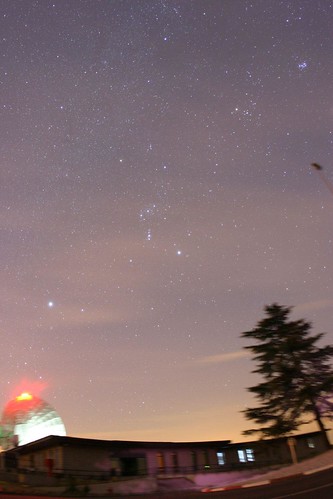This is the month to take advantage of, and enjoy, the long nights!
The earliest sunset here in Sussex occurs at 15:54 on the 12th of December, and the shortest day is on the 21st this year. The Earth is tilted, and the shortest day occurs when that side of the Earth is tilted directly away from the Sun - and so the solstice actually occurs at a specific moment in time, at 17:46 on the 21st December, 2009.
The increasingly inaccurately named summer-triangle is still visible, low in the west, but only until 7.30pm - ideal for after-school observing events! And the Andromeda galaxy is still well placed in the evening sky (see last months posting for full details about both of those).

Jupiter is still a wonderful sight until about 8pm throughout the month - just look for the brightest object you can find, low in the west, and that will be Jupiter! Look through binoculars or a small telescope to see four of the 60 moons that orbit this gas giant.
The 21st of December is a great day for a photo' opportunity. That late afternoon and early evening, the planet Jupiter is visible just below the Moon. And just to the top-right of Jupiter, is the planet Neptune - although you will need a telescope to see Neptune, as it is 10,000 times fainter than Jupiter!
Rising at 8pm in the east is the constellation of Orion - a very familiar sight in the winter skies, thanks to the three stars that form a straight line, and which are known as Orion's belt (as in the photo to the left). Just below those three stars in a line, are another group of three stars in a line... only, the middle star is not a star at all, but a huge gas cloud where stars are in the process of forming. You can see it with your own eyes, but look through a telescope and you can see much more detail, and take a long exposure photo', and you can see even more detail! The movie below shows the difference between looking through a telescope yourself, and taking a 15 minute long exposure photograph.
You can get some very easy-to-use and clear star maps from either Skymaps.com, or by using the excellent (and free) Stellarium Planetarium software.
No comments:
Post a Comment